The NBA’s draft lottery, which takes place annually between the end of the regular season and the draft, is the league’s way of determining the draft order and disincentivizing second-half tanking. The lottery gives each of the 14 non-playoff teams – or whichever clubs hold those teams’ first-round picks – a chance to land one of the top four selections in the draft.
Although the top four picks of each draft are up for grabs via the lottery, the remaining order is determined by record, worst to best. The league’s worst team isn’t guaranteed a top-four spot in the draft, but is tied for the best chance to land the first overall pick and will receive the fifth overall selection at worst.
The first four picks are determined by a draw of ping-pong balls numbered 1 through 14. Four balls are drawn, resulting in a total of 1,001 possible outcomes. 1,000 of those outcomes are assigned to the 14-non playoff teams — for instance, if balls numbered 4, 7, 8, and 13 were chosen, that combination would belong to one of the 14 lottery teams. The 1,001st combination remains unassigned, and a re-draw would occur if it were ever selected.
The team whose combination is drawn first receives the number one overall pick, and the process is repeated to determine picks two, three, and four. The 14 teams involved in the draft lottery are all assigned a specific number of combinations, as follows (worst to best):
- 140 combinations, 14.0% chance of receiving the first overall pick
- 140 combinations, 14.0%
- 140 combinations, 14.0%
- 125 combinations, 12.5%
- 105 combinations, 10.5%
- 90 combinations, 9.0%
- 75 combinations, 7.5%
- 60 combinations, 6.0%
- 45 combinations, 4.5%
- 30 combinations, 3.0%
- 20 combinations, 2.0%
- 15 combinations, 1.5%
- 10 combinations, 1.0%
- 5 combinations, 0.5%
If two lottery teams finish the season with identical records, each team receives an equal chance at a top-four pick by averaging the total amount of outcomes for their two positions. For instance, if two teams tie for the league’s fourth-worst record, each club would receive 115 combinations and an 11.5% chance at the first overall pick — an average of the 125 and 105 combinations that the fourth- and fifth-worst teams receive.
If the average amount of combinations for two positions isn’t a whole number, a coin flip determines which team receives the extra combination. For example, if two clubs tied for the league’s third-worst record, the team that wins the coin flip would receive 133 of 1,000 chances at the first overall pick, while the loser would receive 132. The coin flip also determines which team will draft higher in the event that neither club earns a top-four pick.
The table below displays the odds for all 14 lottery teams. Each figure in the table represents a percentage rounded to one decimal place. Seeds are listed in the left column (the NBA’s worst team is the first seed), while the picks are noted along the top row.
| Seed | 1 | 2 | 3 | 4 | 5 | 6 | 7 | 8 | 9 | 10 | 11 | 12 | 13 | 14 |
|---|---|---|---|---|---|---|---|---|---|---|---|---|---|---|
| 1 | 14 | 13.4 | 12.7 | 12 | 47.9 | – | – | – | – | – | – | – | – | – |
| 2 | 14 | 13.4 | 12.7 | 12 | 27.8 | 20 | – | – | – | – | – | – | – | – |
| 3 | 14 | 13.4 | 12.7 | 12 | 14.8 | 26 | 7 | – | – | – | – | – | – | – |
| 4 | 12.5 | 12.2 | 11.9 | 11.5 | 7.2 | 25.7 | 16.7 | 2.2 | – | – | – | – | – | – |
| 5 | 10.5 | 10.5 | 10.6 | 10.5 | 2.2 | 19.6 | 26.7 | 8.7 | 0.6 | – | – | – | – | – |
| 6 | 9 | 9.2 | 9.4 | 9.6 | – | 8.6 | 29.8 | 20.6 | 3.7 | 0.1 | – | – | – | – |
| 7 | 7.5 | 7.8 | 8.1 | 8.5 | – | – | 19.7 | 34.1 | 12.9 | 1.3 | >0 | – | – | – |
| 8 | 6 | 6.3 | 6.7 | 7.2 | – | – | – | 34.5 | 32.1 | 6.7 | 0.4 | >0 | – | – |
| 9 | 4.5 | 4.8 | 5.2 | 5.7 | – | – | – | – | 50.7 | 25.9 | 3 | 0.1 | >0 | – |
| 10 | 3 | 3.3 | 3.6 | 4 | – | – | – | – | – | 65.9 | 19 | 1.2 | >0 | >0 |
| 11 | 2 | 2.2 | 2.4 | 2.8 | – | – | – | – | – | – | 77.6 | 12.6 | 0.4 | >0 |
| 12 | 1.5 | 1.7 | 1.9 | 2.1 | – | – | – | – | – | – | – | 86.1 | 6.7 | 0.1 |
| 13 | 1 | 1.1 | 1.2 | 1.4 | – | – | – | – | – | – | – | – | 92.9 | 2.3 |
| 14 | 0.5 | 0.6 | 0.6 | 0.7 | – | – | – | – | – | – | – | – | – | 97.6 |
The NBA’s lottery format was changed in 2019 and that year’s draft was the first one to use the new system. Previously, only the top three spots were determined via the lottery and the odds were weighted more heavily in favor of the league’s worst teams.
Beginning in 2021, the NBA’s lottery underwent another small change when the league introduced the play-in tournament. The lottery now includes the 10 teams that miss out on the playoffs and the play-in tournament, plus the four clubs that are eliminated in the play-in portion of the postseason.
That means a team can finish the regular season ranked seventh or eighth in its conference, but if that club is eliminated in the play-in tournament, it will be in the lottery. Conversely, a team that finishes ninth or 10th in its conference during the regular season and then wins a pair of play-in games to earn a playoff spot will be a non-lottery team.
Once the 14 lottery teams are determined, their lottery odds are still dictated by their regular season records, so the play-in losers won’t necessarily be the 11-14 “seeds” in the lottery. For example, in 2022, the 34-48 Spurs ended up with better lottery odds than the 37-45 Knicks or 35-47 Wizards, even though San Antonio participated in the Western Conference play-in tournament while New York and Washington didn’t qualify for the East’s play-in.
Note: This is a Hoops Rumors Glossary entry. Our glossary posts will explain specific rules relating to trades, free agency, or other aspects of the NBA’s Collective Bargaining Agreement.
Information from Tankathon.com and Wikipedia was used in the creation of this post. Earlier versions of this post were published in past years.

 A top-14 pick who does not meet the starter criteria will receive a qualifying offer equal to the amount the 15th overall pick would receive if he signed for 120% of the rookie scale.
A top-14 pick who does not meet the starter criteria will receive a qualifying offer equal to the amount the 15th overall pick would receive if he signed for 120% of the rookie scale.
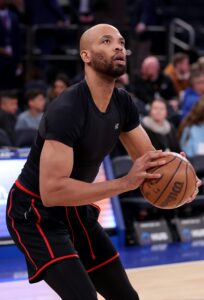 For example, when
For example, when 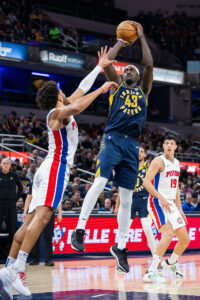 No cap hold can exceed the maximum salary for which a player can sign. For example, the cap hold for a Bird player with a salary above the league average is generally 150% of his previous salary, as noted above. But for someone like Pacers forward
No cap hold can exceed the maximum salary for which a player can sign. For example, the cap hold for a Bird player with a salary above the league average is generally 150% of his previous salary, as noted above. But for someone like Pacers forward 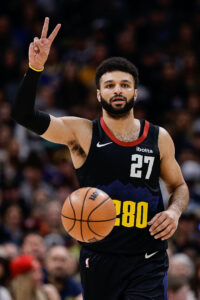 A player is permitted to fall short of the 20-minute threshold twice and still have the game count toward his minimum as long as he logs at least 15 minutes in those games. So a player who plays 20 minutes in 63 games and 15 minutes in two more contests would reach the 65-game minimum. However, any outing of less than 15 minutes would not count toward the minimum.
A player is permitted to fall short of the 20-minute threshold twice and still have the game count toward his minimum as long as he logs at least 15 minutes in those games. So a player who plays 20 minutes in 63 games and 15 minutes in two more contests would reach the 65-game minimum. However, any outing of less than 15 minutes would not count toward the minimum. Murray would be eligible for a
Murray would be eligible for a  The salary limitations that apply to Non-Bird rights are more severe than those pertaining to Bird rights or Early Bird rights, so in many cases, the Non-Bird exception may not be enough to retain a well-regarded free agent. For instance, the Nuggets held
The salary limitations that apply to Non-Bird rights are more severe than those pertaining to Bird rights or Early Bird rights, so in many cases, the Non-Bird exception may not be enough to retain a well-regarded free agent. For instance, the Nuggets held 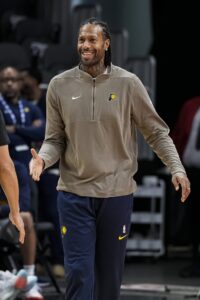 As is the case with Bird rights, a player’s clock stops when he’s released by a team and clears waivers, but it would pick up where it left off if he re-signs with that same team down the road without joining another club in the interim. For instance,
As is the case with Bird rights, a player’s clock stops when he’s released by a team and clears waivers, but it would pick up where it left off if he re-signs with that same team down the road without joining another club in the interim. For instance, 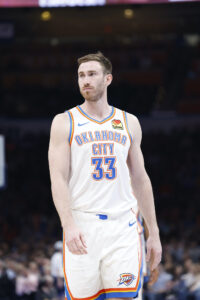 For instance, the Thunder will hold
For instance, the Thunder will hold 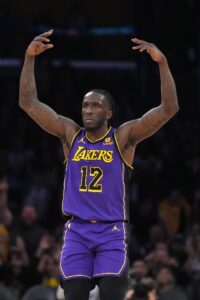 Three teams
Three teams 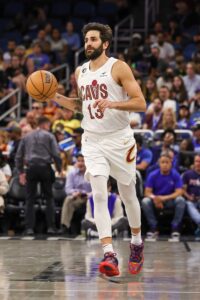 Although the term “buyout” is often applied colloquially when any veteran is released after the trade deadline, it applies specifically to a player who gives up a portion of his salary to accommodate his release.
Although the term “buyout” is often applied colloquially when any veteran is released after the trade deadline, it applies specifically to a player who gives up a portion of his salary to accommodate his release.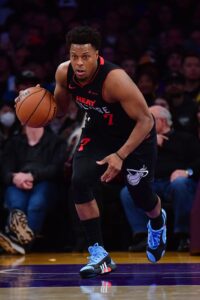 The equation for a player in the final year of his contract is pretty simple — the amount he agrees to give up in the buyout is simply subtracted from his overall cap hit. Lowry agreed to surrender to $1,138,964, reducing his cap charge for the Hornets from $29,682,540 to $28,543,576.
The equation for a player in the final year of his contract is pretty simple — the amount he agrees to give up in the buyout is simply subtracted from his overall cap hit. Lowry agreed to surrender to $1,138,964, reducing his cap charge for the Hornets from $29,682,540 to $28,543,576.